Today we are hottest video game sex scenesinvestigating two commonly asked questions about gaming laptops: what's the performance like on battery and how long do these laptops last in games? We'll also explore if battery life can be extended in any way; and do less powerful systems last longer? We have some great apples-to-apples data for you, so it should be interesting to learn and have this as a bit of an FAQ for gaming laptop buyers.
The reason we say apples-to-apples is that we have the rare opportunity of testing two essentially identical systems where only the discrete GPU is different. This will let us test how the GPU difference impacts battery life and playability when you are not plugged in to the wall.
Our test bed consists of two Acer Predator Triton 700 systems, both have typical laptop hardware like a Core i7-7700HQ CPU, a 1080p display, and 512GB SSDs. One machine has a GeForce GTX 1060 6GB, while the other has a GeForce GTX 1080 Max-Q.
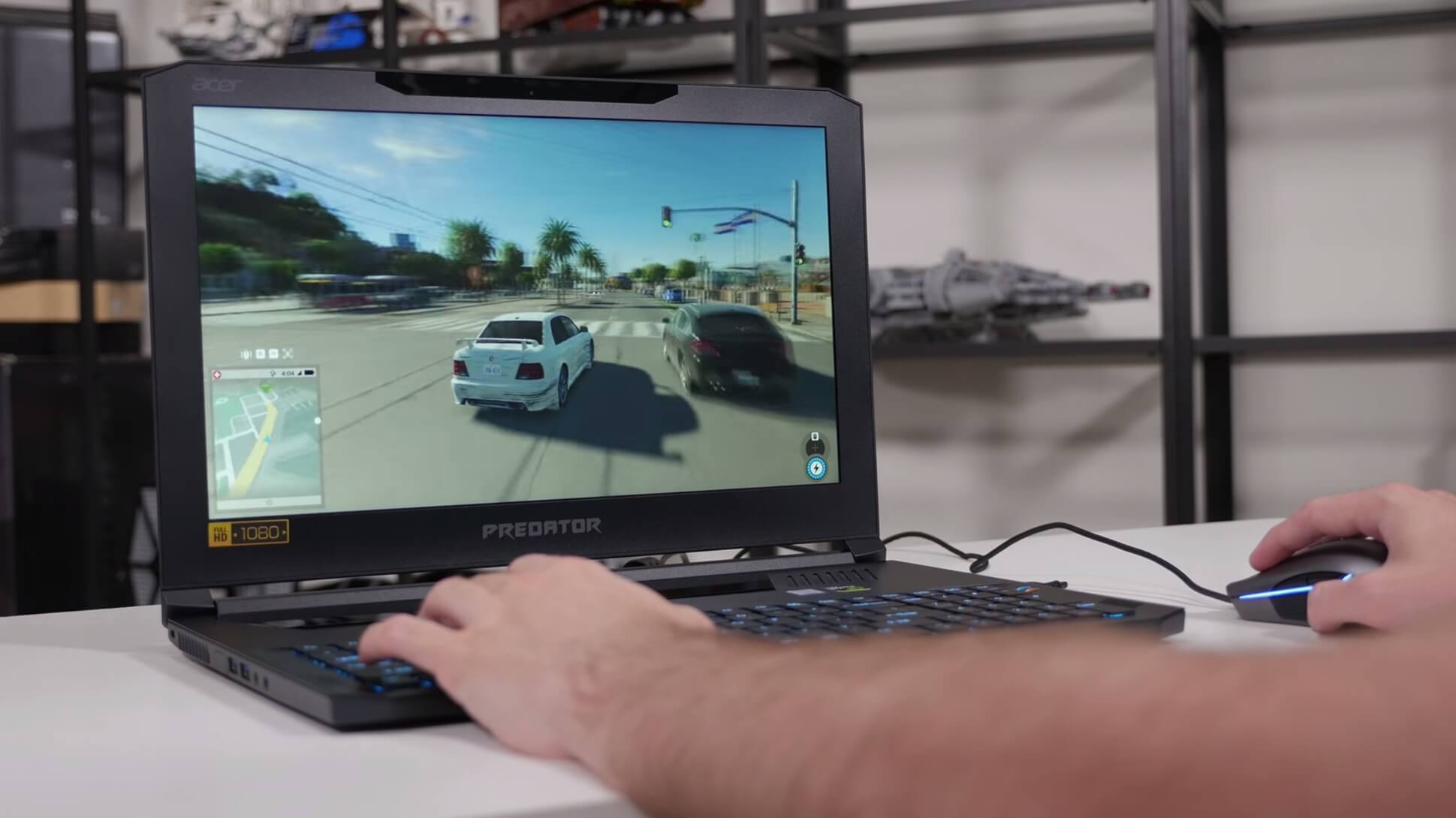
Both use the same cooler and largely the same other hardware. The only other difference is the 1080 Max-Q model has 32GB of RAM instead of 16GB, and a higher refresh 120Hz display with G-Sync. Both systems have batteries approximately 50 Wh in size, which is fairly small for a gaming laptop.
As a reference, the three gaming laptops we recommended in our Best Laptops feature these past holidays had 50 Wh, 62 Wh and 48 Wh sized batteries, in the Asus ROG Zephyrus, Asus ROG GL502VS and Acer Predator Helios 300, respectively. Meaning the Triton 700 we are testing with does have a small battery that is nonetheless not out of the norm for slim gaming laptops.
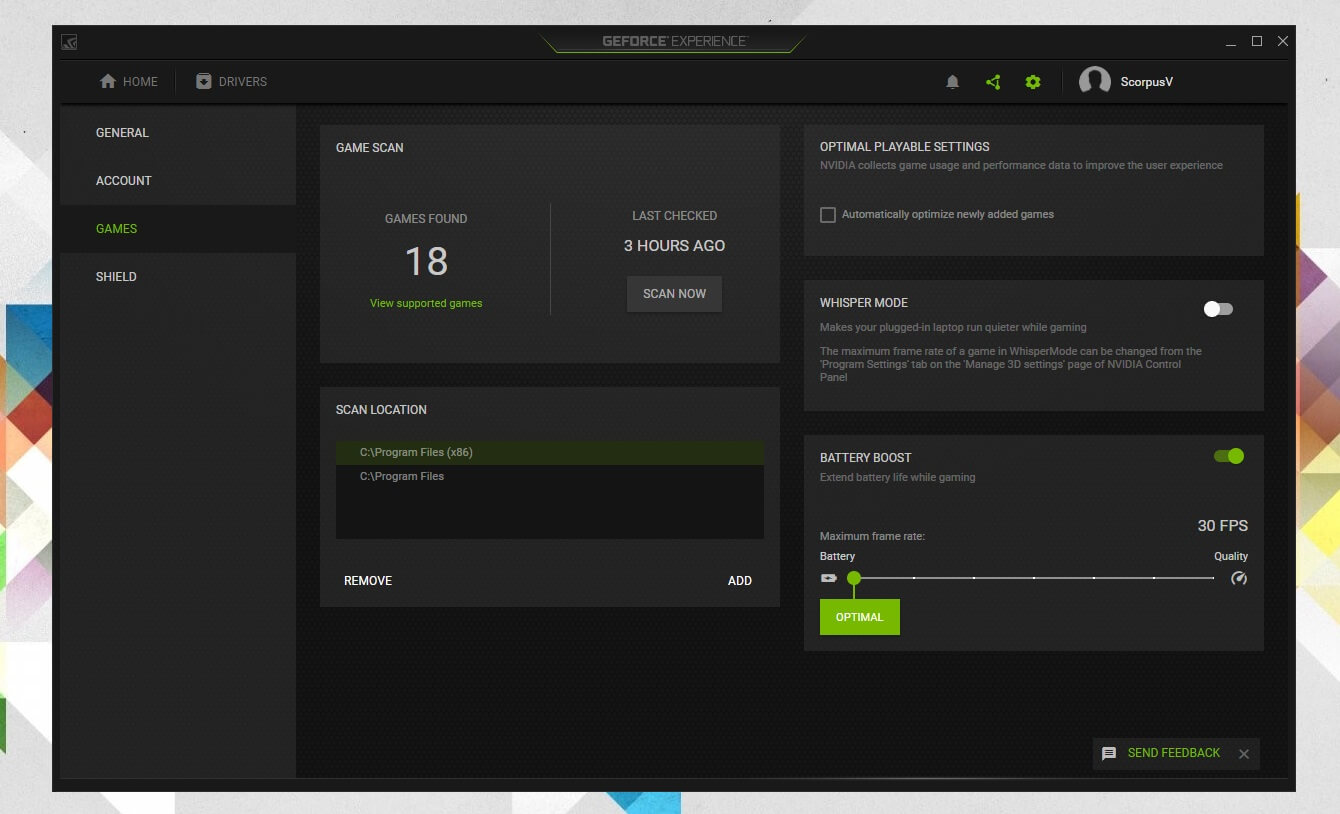
So when gaming on battery there are a couple of different performance modes you can choose from using the GeForce Experience utility. Called Battery Boost, this setting limits the performance of games to a frame rate of your choice between 30 and 60 FPS when enabled.
The idea is that you can cap a game's performance, leading to lower GPU usage and less battery drain for potentially longer gameplay on battery.
But there's one critical thing to note here: even when Battery Boost is disabled, you will never achieve the same level of performance as when plugged in. This is down to simple battery physics: the battery can't provide the 180 to 230 watts that the charger provides, and even if it could, it'd likely run at dangerously hot levels and last for about 15 minutes.
So when gaming on battery, there is a significant power limit no matter what settings or tweaks you make, just keep that in mind.








To explore just how significant the performance drop is, I ran the Triton 700s through our standard laptop GPU benchmarks on battery and compared the results to the plugged-in numbers I gathered earlier. As you can see in these charts, the performance drop is huge in most cases. Games that were running at 60 FPS or above now struggle to reach 20 FPS, and across the board, games that were playable on both systems with ultra detail settings are now utterly unplayable when you pull out the charger.
The average performance drop for the GTX 1060 was 66.8 percent in average framerates, and 69 percent in 1% lows. This means that on battery, the GTX 1060 model has roughly one third the performance it has on the charger. The GTX 1080 Max-Q is hit a bit harder, with an average drop of 71% in average framerates, and 78 percent in 1% lows, for around one quarter the performance it had previously.
Now of course, when connected to a charger, the GTX 1080 Max-Q does hold a significant performance advantage over the GTX 1060: across the games tested, that lead is around 40 percent. However on battery, with a crippling power limit in place, that lead is cut and the results are... interesting.
When looking at average framerates, the GTX 1080 Max-Q still holds a performance lead, though it's been reduced to 21 percent on average when on battery. But when looking at 1% low framerates, the average result is within a few percent of the GTX 1060. This leads to some intriguing observations.

In some situations, it appears the GTX 1080 Max-Q runs more efficiently than the GTX 1060, allowing higher performance under similar power limits, which is why the 1080 Max-Q is still faster than the 1060 on battery in average frame rates. However, the 1080 Max-Q model suffers from horrendous stuttering under this power limit in a handful of titles, in particular Rise of the Tomb Raider, Watch Dogs 2 and Prey.
In these games there are regular one to two second periods where the framerate dips to under 5 FPS, even when you turn down the quality settings to achieve a more playable average framerate on battery. The regularity of these pauses suggests the system is struggling under the power limit, with small fluctuations in battery output potentially causing the GPU to starve of power for brief moments.
So while the GTX 1080 Max-Q can be faster at times on battery in otherwise very similar systems, it's the GTX 1060 that delivers more consistent performance on battery, without the same stuttering concerns. In either case, the performance drops are significant enough that you'll have to turn down the quality levels to low in most games just to achieve frame rates above 30.
The other question is how long do gaming laptops actually last while gaming on battery. This is a difficult question to answer in general considering the wide variety of hardware and battery capacities, but we'll first look at some data from the Triton 700 and then I'll discuss the situation a bit more generally.
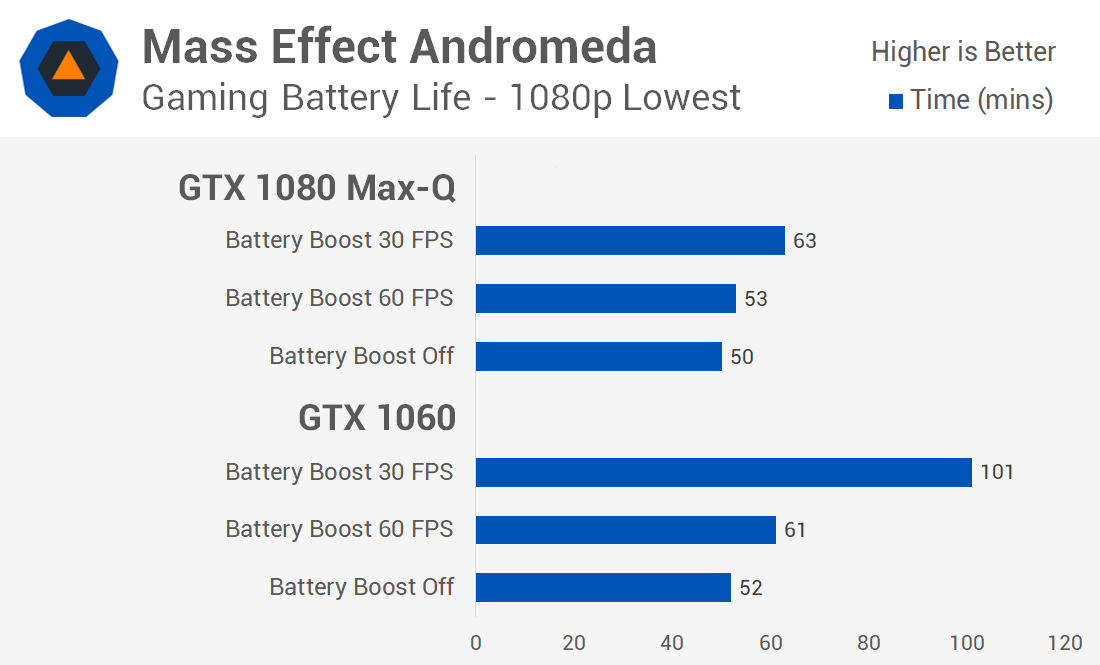
The first game I tested with was Mass Effect Andromeda, because it scales down nicely and allows you to achieve more than 60 FPS on the lowest settings on battery with these systems. This gives us a good idea of how Nvidia's Battery Boost technology works to enhance the battery life of these systems.
With the GTX 1060 system running at full performance, I achieved 52 minutes of gaming, which is short though not unexpected for a gaming system. Here the game runs at around 100 FPS in the area I tested with and at the lowest settings at 1080p. Capping the game to 60 FPS using Battery Boost didn't have a massive effect, increasing play time by just 9 minutes for a 17% gain. However, the real gains are seen in capping the game to 30 FPS; now the laptop lasted just shy of twice as long, which is a huge gain. Of course, you will have to put up with a console-like experience at low detail levels, and even then you won't get 2 hours of life here, but it does show the advantage of Battery Boost.
On the other hand, the GTX 1080 Max-Q model isn't as affected by Battery Boost. It achieved around the same gameplay duration with Battery Boost disabled, at a slightly higher level of performance, however capping the game to 60 FPS only increased the battery life by 6 percent, and capping to 30 FPS led to just a 26 percent increase. Going from 100+ FPS to 30 FPS for just 13 minutes more gameplay in this situation isn't ideal.
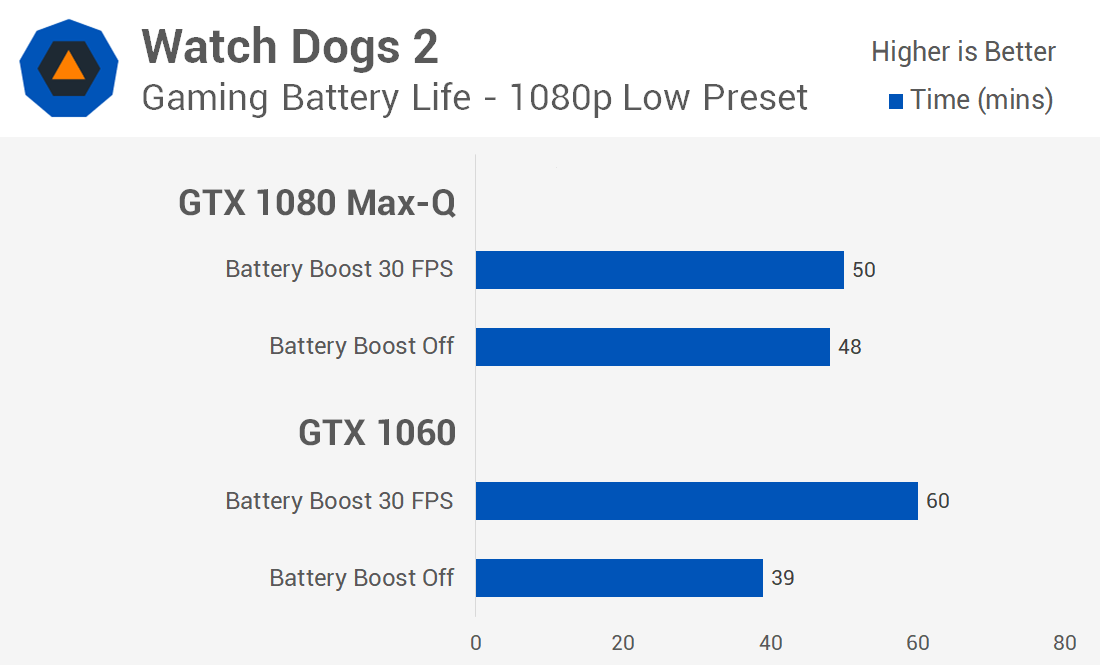
It's a similar story with Watch Dogs 2. Here the game set to 1080p and the low preset, achieved around 42 FPS in the test area on both systems, and it was surprising to discover the GTX 1080 Max-Q model lasted a good 9 minutes, or 23 percent longer. However when capped to 30 FPS, it's the GTX 1060 that outperformed the GTX 1080 Max-Q by 20 percent, using its efficiency when underutilized to just hit the 60 minute mark. The GTX 1080 Max-Q barely improved in stamina when Battery Boost was activated to reduce performance by 27 percent.
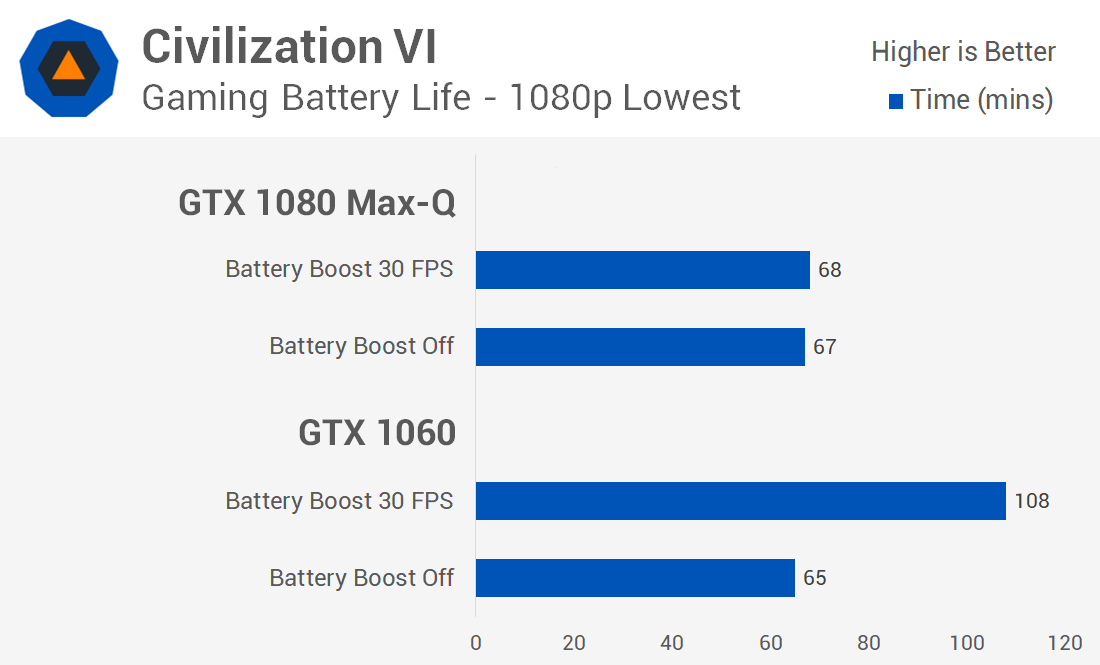
The final game I tested with is Civilization VI, which like a lot of strategy games is great for playing on the go. With the performance uncapped, the GTX 1060 model hovered around 45 FPS in a late-game save with everything at the lowest detail level. Surprisingly it managed to last 65 minutes at this performance, and incredibly, capping the game to 30 FPS boosted this result to 108 minutes. In other words, a 33 percent reduction in frame rate led to a 66 percent increase in stamina, which is excellent from this system. And Civilization VI is very playable at a locked 30 FPS.
Civilization VI also lasts longer than normal with the GTX 1080 Max-Q, but it's again a title where Battery Boost's 30 FPS cap has no significant impact on battery life.
In general, these battery life figures are quite low, and that's a product of the mere 50 Wh battery inside the Triton 700. Many other larger and heftier gaming laptops feature larger batteries, in the 75 to 100 Wh range, and those typically last between 1 and 3 hours in games. Yeah, that's still not ages, but it's a little better than these numbers.
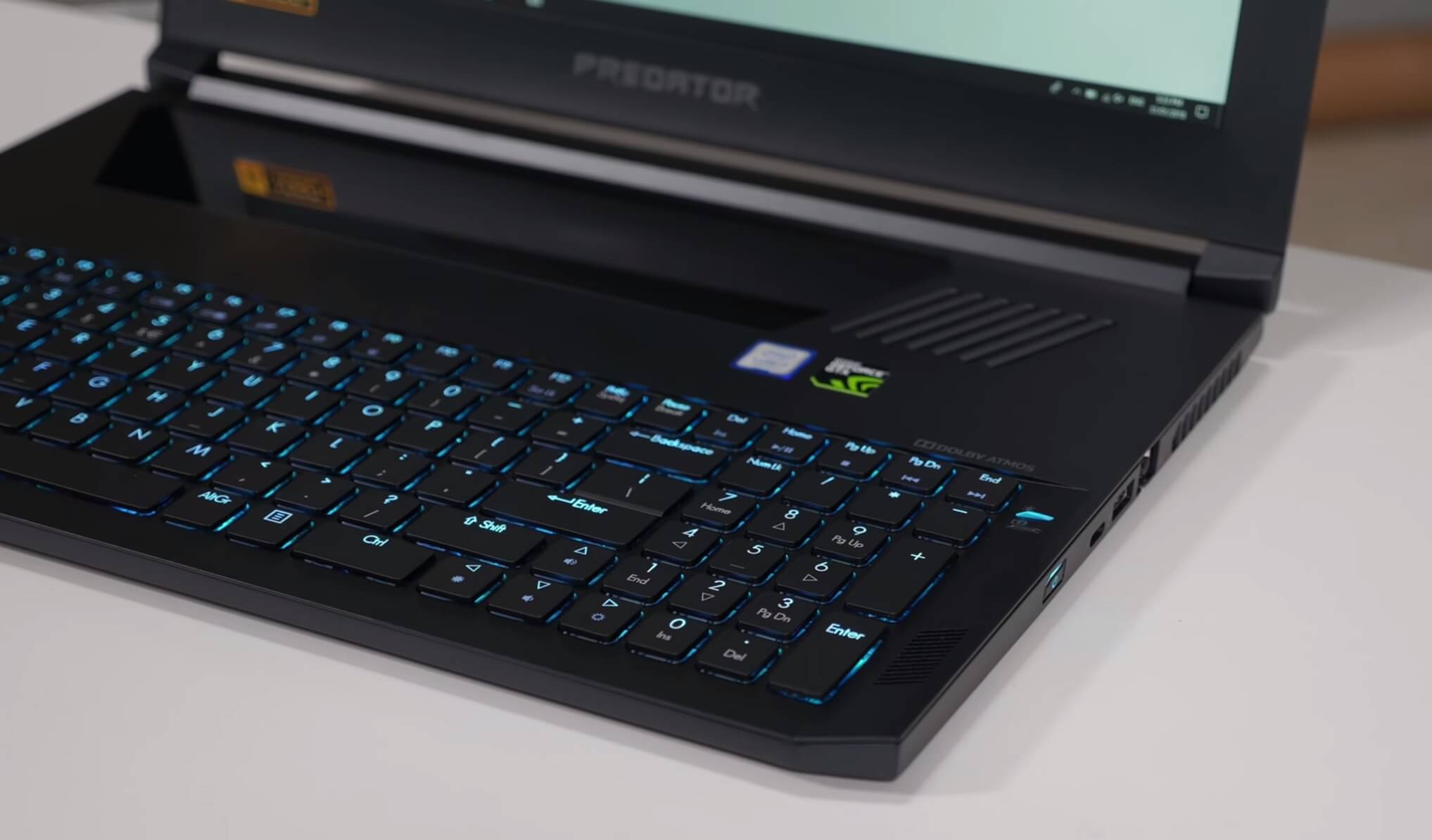
I will say, though, that if you are planning on utilizing Battery Boost you should also enable V-Sync, as for some reason you get nasty tearing in some games with V-Sync disabled and Nvidia capping the frame rate to 30 FPS.
If you're thinking of buying a gaming laptop and want to play games away from the power outlet, based on these tests I'd recommend a few things: 1) pick and choose the game carefully, something closer to a eSports title that doesn't rely so heavily on sheer GPU power will do better, 2) don't get something too powerful, as you won't be harnessing the extra power and it likely won't last as long compared to a less powerful system.
The GTX 1060 provides a decent mix of plugged-in power and battery stamina when capped to 30 FPS, though if you want to do a lot of gaming on battery, something like a GTX 1050 or 1050 Ti could be a better option. No matter the situation though, don't expect to get a lot of performance out of a system running on battery power.
 Man City vs. Real Madrid 2025 livestream: Watch Champions League for free
Man City vs. Real Madrid 2025 livestream: Watch Champions League for free
 Cosplayer Belle Delphine trolled her followers with the promise of a Pornhub account
Cosplayer Belle Delphine trolled her followers with the promise of a Pornhub account
 Apple's latest short film is a glimpse into the lives of users with disabilities
Apple's latest short film is a glimpse into the lives of users with disabilities
 Wordle today: Here's the answer, hints for November 29
Wordle today: Here's the answer, hints for November 29
 Ms. Frizzle spotted at Science Marches across the globe
Ms. Frizzle spotted at Science Marches across the globe
 Julia Weldon on new opportunities for non
Julia Weldon on new opportunities for non
 Elon Musk says he'll make his own smartphone if Apple bans Twitter
Elon Musk says he'll make his own smartphone if Apple bans Twitter
 Netherlands vs Qatar livestream: How to watch FIFA World Cup Group A live
Netherlands vs Qatar livestream: How to watch FIFA World Cup Group A live
 Amazon CEO tries to sell kids on working on the moon
Amazon CEO tries to sell kids on working on the moon
 Twitter Blue's relaunch has been delayed again, this time to avoid Apple's 30 percent fee
Twitter Blue's relaunch has been delayed again, this time to avoid Apple's 30 percent fee
 Google is suing scammers that prey on small businesses
Google is suing scammers that prey on small businesses
 How to not get sucked into the online skincare vortex
How to not get sucked into the online skincare vortex
 Julia Weldon on new opportunities for non
Julia Weldon on new opportunities for non
 Will Oracle take over TikTok? Trump says he'll make a decision in 30 days
Will Oracle take over TikTok? Trump says he'll make a decision in 30 days
 Famous Mexican rescue dog Frida retires from the line of duty
Famous Mexican rescue dog Frida retires from the line of duty
 How to not get sucked into the online skincare vortex
How to not get sucked into the online skincare vortex
 Bad Bunny is Spotify's top global artist of 2022
Bad Bunny is Spotify's top global artist of 2022
 Best air purifier deal: Save $300 on the Dyson HEPA Big + Quiet air purifier
Best air purifier deal: Save $300 on the Dyson HEPA Big + Quiet air purifier
 Tunisia vs France livestream: How to watch World Cup Group D live
Tunisia vs France livestream: How to watch World Cup Group D live
2017 was the year women took back their own narrativesLin Manuel Miranda's corny New Year's blessing is what we needLake Erie's 5 feet of snow sure makes for some weird ass stuntsSoccer match gets upstaged by hilarious snowball fight between opposing fansSoccer match gets upstaged by hilarious snowball fight between opposing fansJohn McAfee claims his Twitter account was hackedUber is selling its autoThe iPhone is once again the best10 albums turning 10 years old in 2018With iPhone X, Unity developer turns his head invisibleHow Newark Mayor Ras Baraka plans to keep Newark net neutralPoor, unfortunate soul gets his penis stuck in a London subway gateHere's why Apple is getting sued for slowing down phonesStop reading what Facebook tells you to readIsrael is looking to launch a national cryptocurrencyComposer John Williams is returning for 'Solo: A Star Wars Story'There's a growing #resistance to cryptocurrency, and is anyone surprised?With iPhone X, Unity developer turns his head invisible'Game of Thrones' star Instagrams precious baby pic and fans are gushingAmazon's Echo Dot and Alexa voice assistant ruled this holiday season Apple AirPods Pro might get a 'hearing aid' feature with iOS 18 '7 Keys' review: This sexy thriller is a mean piece of work Scientists warned of an impending disaster in Puerto Rico 5 days ahead Trump lashed out at San Juan's mayor after she begged for help in Puerto Rico Get $150 off the Dyson Outsize at Amazon Sony BOGO deal: Get a free TV with select purchases NYT's The Mini crossword answers for March 11 How to turn read receipts on or off on Instagram Bumble rethinking women 'making the first move' Reddit IPO: Price, listing date, and which Redditors are getting the stock Rabbi in Puerto Rico pleads for help on eve of Yom Kippur Best robot vacuum deal: The Shark Matrix Plus 2 Watch Ryan Gosling perform 'I'm Just Ken' at the Oscars FEMA Administrator blames logistics for slow Puerto Rico relief, gets major Twitter reality check Elon Musk wants SpaceX to fly you anywhere on Earth in under an hour A TikTok photo Best camping tent deals: Shop tent sales at Amazon NYT's The Mini crossword answers for March 10 Wildlife Watchdog urges Instagram to take action again sloth selfies Wordle today: The answer and hints for March 11
3.7945s , 10590.75 kb
Copyright © 2025 Powered by 【hottest video game sex scenes】,Miracle Information Network